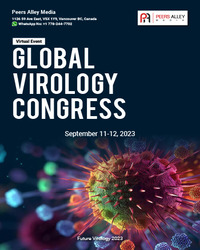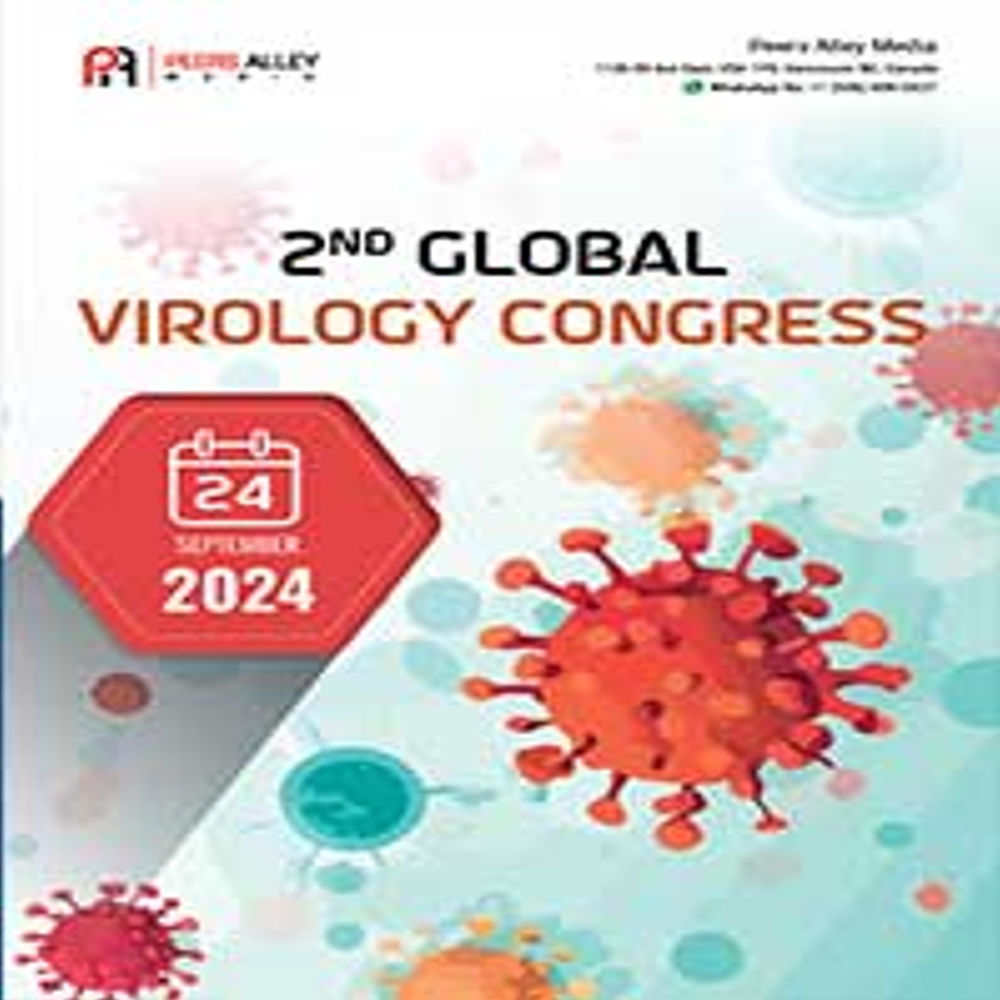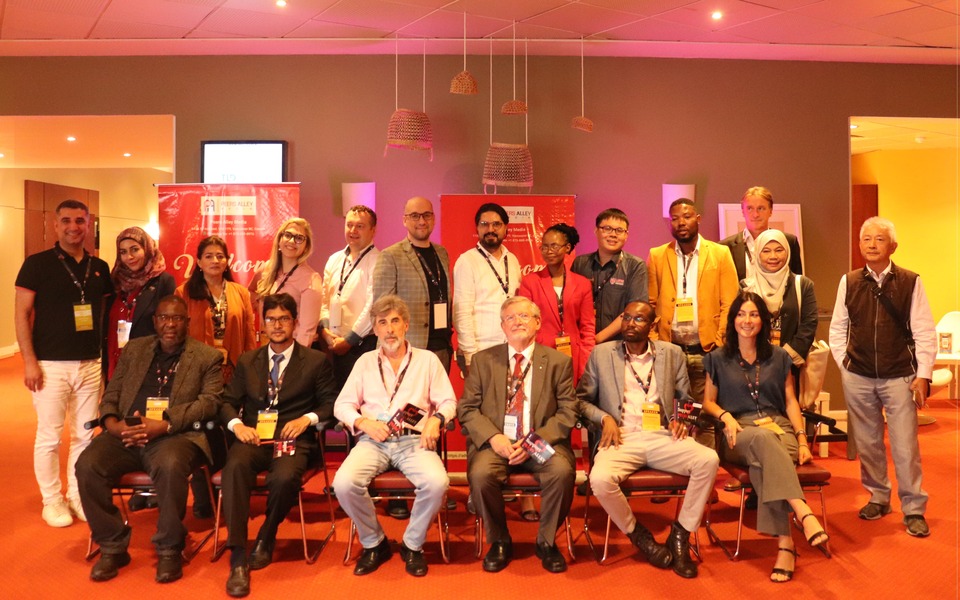
Adv.ESCC 2022
Peers Alley Media,Canada

Primary goal of attending an international conference is to present a paper to the experts and influencers. It gives you a platform to exchange your interest-related thoughts, paving the way for possible future collaborations.

Use this platform to build connections with an elite group of wise men and women to enhance your intellect. Young entrepreneurs, this is a great platform to connect with your peers.

Knowledge is Power. Knowledge teaches skills. Skills define excellence. Use this platform to become cognizant of your interest area to achieve excellence in your domain.

Attending a conference give you opportunity to get your abstract or paper published in conference proceedings

Meet and greet a myriad of industry professionals and academia experts with common interest. Every meal will be an opportunity to meet and interact with fellow researchers, attendees and experts.

Expand your professional competency and learn useful tips and tricks of your industry in our skill-building workshops.

Explore insights on recent advancements, new equipment, new techniques, and unpublished data, learn from thought-leaders and get to network with a great line up of speakers.

Our exhibits floor offers the attendees with a dynamic display of the latest products with cutting-edge technology.

Investing in you is the best investment. Peers Alley conferences give the patrons with a feeling of the serendipity of real learning, skill development in strategic workshops, networking and start-up opportunities, thus, is value for money.

Attending the conference gives you much needed break from your regular duties. It also allows you to explore new cities, culture and meet new people. You will feel energized and rejuvenated to return to the university and continue with the job after attending the conference.
Conferences are vital forum for academic researchers and business leaders. "It involves multiple presentations, interactive breakout sessions, hands-on product demonstrations and unrivalled networking opportunities".
We have invited some of the world's most sought-after keynote speakers, experts, brand ambassadors, and industry leaders to share their thoughts and ideas with our conference guests.
Register Now
Conference Theme: “A review of innovative therapeutic approaches to combat various viral diseases. A discussion of current status and future developments in antiviral drug discovery”.
With the tremendous growth of the population and the current Covid-19 pandemic, there has been an unexpected increase in need for virologists in healthcare sector. Virologists not only diagnose diseases caused by viruses, but also study the pharmacological response of viruses to antiviral drugs and the evolution of drug resistance. Virologists give expert advice to colleagues on hospital wards and to veterinarians, as well as to governments to handle various pandemics. It was currently estimated that there are 320,000 mammalian viruses, many of which have the potential to infect humans. Viruses are known to quickly mutate and a virologist can study these variants and help in developing drugs and vaccines, which are the need of the hour. The virology market is anticipated to grow at a CAGR of 3.6% from 2021 to 2028, from US$ 4,108.27 million in 2021 to US$ 5,276.48 million in 2028.
about Future Virology 2025 conference

Dear Colleagues,
I strongly recommend my colleagues to attend the next "3rd Global Virology Congress, September 25-26, 2025, in Berlin, Germany", and i am happy to meet you there.
I attended as plenary speaker and session Chair “Future Virology 2024” held in Barcelona September 22-23, 2024.
This “Future Virology 2024” has scientifically been a great success due to the excellence of selected speakers from Japan, USA, EU, Canad and time allotted to questions in sessions and coffee breaks. It is also my pleasure to report the excellence of the organization, as well as the quality of scientific booklets (abstracts, bio) promoted by Conference Director Annie Shirel.

Dear Colleagues and Friends,
On behalf of the scientific committee, it is our great pleasure to announce and warmly invite you to the "3rd Global Virology Congress, scheduled for September 25-26, 2025, in Berlin, Germany". This event, Future Virology 2025, continues the proud tradition of these meetings, offering a platform to showcase the latest breakthroughs in molecular virology and advances in the prevention, diagnosis, and treatment of a wide range of viral diseases.
The congress will provide a global forum with an interdisciplinary approach. Designed to foster insightful exchanges and meaningful discussions, it offers ample opportunities for networking and establishing fruitful collaborations. The event will feature keynote presentations, mini-plenary sessions, posters, and interactive discussions on novel advancements in managing and treating various established, emerging, and reemerging viral diseases, with special attention to preparing for future pandemics. Key topics will address current clinical challenges, offering valuable insights to help clinicians select the most effective treatments for viral infections. Attendees will also benefit from research findings that are essential to the evolving landscape of virology and viral treatment strategies. To continue click here

Harvard Medical School, USA

Saint Louis University, USA

Osaka University, Japan

University of Tsukuba, Japan

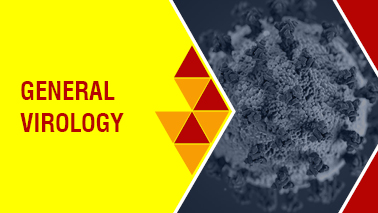
Virology is the scientific study of viruses and virus-like agents. A virus is a parasitic intracellular organism and that’s a protein-coated genetic material. When it comes to size, shape, and chemical makeup, these are heterogeneous intracellular groups of microorganisms that either contain deoxyribonucleic acid (DNA) or ribonucleic acid (RNA).
The primary focus of virology is on the structure, classification, and evolution of viruses as well as how they interact with host and immune response, the diseases they cause, how to isolate and culture them, and how to use them in research and therapy.
Viruses are distinct life forms that different from all other living organisms, either eukaryotes or prokaryotes, for following fundamental reasons:
Usually, virus classification is based on the structure and composition of the virus particle (virion). viruses are classified into various families and each has a different chemical composition. Those are:
The list of virus infections that have had a major socioeconomic impact recently is provided below.
Tags
COVID-19 Conferences
Asian Virology Conferences
Virology Conferences 2025 Europe
Pathology Conferences
Medical Virology Meetings
Vaccine Conferences and Meetings 2025
Microbiology Conferences
Antiviral Research Meetings
Ebola Conferences 2025
American Virology Meetings
Virology Meetings 2025
Influenza Conferences
European Congress on Virology

Antivirals are substances that suppress the infection caused by viruses as well as the replication of viruses. Drugs called antivirals can be administered to either prevent or treat illnesses brought on by viruses. Antiviral research includes all aspects of creating medications, vaccines, and immunotherapies against viruses that affect plants, humans and animals.
Particularly in the most developing nations, numerous dangerous human diseases caused by viral infections have very high mortality rates. Because viral mutation rates are so rapid, new drug-resistant strains are constantly arising, necessitating the creation of fresh and potentially more effective antiviral drugs.
Recently, antiviral drugs have been found to be effective in preventing the virus (SARS-CoV-2) from infecting and spreading to healthy cells in our body and developing COVID-19. In addition to helping your immune system fight off infection, this prevents the virus from spreading throughout your body.
Additionally, novel antiviral drug development deserves a lot of attention. Recent evaluations suggest new therapy for many viral illnesses.
Tags
Influenza Conferences
Virology Conferences
AIDS Research and Therapy Conferences
American Virology Meetings
Ebola Conferences 2025
Virology Conferences 2025 USA
COVID-19 Conferences
Virology Conferences 2025 Europe
Vaccine Conferences and Meetings 2025
European Congress on Virology
Antiviral Research Meetings

The term “Antiviral” refers to a substance that either kills viruses or limits their ability to replicate, preventing them from spreading and reproducing.
It is crucial for the development of antiviral medications to comprehend the chemical biology of the virus, in particular how it interacts with the host cell.
Particularly for the treatment of viral infections, antiviral drugs are employed. In a manner similar to how antibiotics are used to treat bacterial diseases, certain antiviral drugs are used to treat particular viruses. Unlike most antibiotics, antiviral drugs don't cure diseases. Instead, they just stop them from getting worse.
Antiviral drugs can be grouped according to their chemical nature or how they react with certain viral proteins. There are numerous types of antiviral drugs that can treat viruses, including:
The following methods are used to assess antiviral activity:
Tags
Antiviral Research Meetings
Influenza Conferences
Vaccine Conferences and Meetings 2025
Microbiology Conferences
Virology Conferences
Ebola Conferences 2025
Virology Conferences 2025 Europe
European Congress on Virology
AIDS Research and Therapy Conferences
American Virology Meetings
Medical Virology Meetings
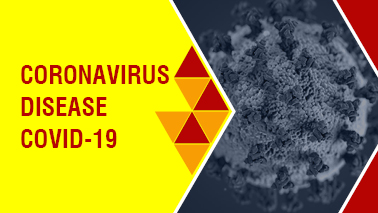
Coronaviruses are a type of virus that can cause respiratory disease in humans. Due to the crown-like spikes on the surface of the virus, they are referred to as "corona." The severe acute respiratory syndrome (SARS), Middle East respiratory syndrome (MERS), and the common cold are examples of human illnesses caused by coronaviruses.
In December of 2019, the SARS-CoV-2 coronavirus strain was initially identified in Wuhan, China. It has since spread to every nation on the planet.
The COVID-19-causing SARS-CoV-2 virus enters the body through the mouth, nose, or eyes (directly from the airborne droplets or from the transfer of the virus from your hands to your face). The virus then moves to the nasal passages and the mucous membrane at the back of the throat. It binds to cells there, multiplies, and then migrates into lung tissue. The virus can then spread to other tissues of the body.
Those at the most risk for getting COVID-19 include those who:
Symptoms of COVID-19 vary across individuals. In reality, some infected people do not manifest symptoms (asymptomatic). In general, individuals with COVID-19 exhibit some of the following symptoms:
Few antiviral drugs that are used to treat Covid 19 includes:
Tags
Ebola Conferences 2025
Vaccine Conferences and Meetings 2025
Pathology Conferences
Virology Conferences 2025 USA
Epidemiology Conferences 2025 Europe
Asian Virology Conferences
Microbiology Conferences
Virology Conferences
Medical Virology Meetings
Antiviral Research Meetings
American Virology Meetings
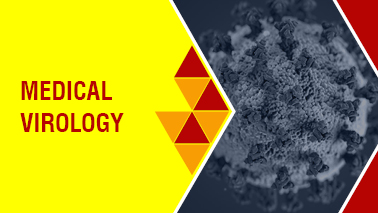
Medical virology and medical microbiology are concerned with the diagnosis, treatment, and prevention of infection spread in hospitals and the community.
Despite the fact that both of these specialisations are lab-based, they are crucial to the clinical therapy of infections. Medical virologists do their research in many different places, such as labs, clinics, hospital wards, and the general public. They deal with problems brought on by newly developing and long-standing viruses like SARS and avian flu, in addition to HIV/AIDS and other blood-borne illnesses like hepatitis B and C.
Medial virology encompass the classification, diagnosis, epidemiology, immunology, and pathogenesis of viral infections in humans, as well as fundamental studies on the morphology, genetics, replication, and host-cell interactions of viruses.
Understanding the pathogenetic mechanisms by which viruses enter, spread inside, and depart the body is also crucial for proper illness diagnosis and treatment. There are many aspects of medical virology that are currently well understood, many more that are still uncertain, and some that are slowly becoming vibrant. The properties of viruses and the interactions they have with their hosts are important to understand in order to successfully explore and treat viral pathologic diseases.
Tags
Microbiology Conferences
Pathology Conferences
Asian Virology Conferences
Virology Conferences 2025
COVID-19 Conferences
European Congress on Virology
Virology Conferences 2025 USA
Ebola Conferences 2025
Virology Meetings 2025
Medical Virology Meetings
American Virology Meetings
Antiviral Research Meetings
Influenza Conferences
Virology Conferences
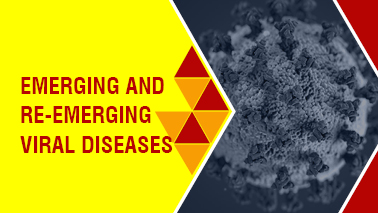
In particular, the current decade is concerned with the emergence of novel human infections and the re-emergence of several diseases.
Emerging viral disease: A disease that has recently revealed in a population or may have existed in the past but is expanding quickly in terms of incidence or geographic reach is considered an emerging disease by the World Health Organization (WHO).
Emerging infections are essentially illnesses whose prevalence has been observed to have increased in recent decades or has threatened to increase in the future. Such emergences frequently occur as a result of the discovery or expansion of a pathogen in more recent locations, the identification of diseases that have been prevalent in a community but were previously unknown.
A few recent human emerging viral diseases are:
Re-emerging viral disease: Diseases that appear after a prolonged period of decrease are referred to as re-emerging diseases. Re-emergence of diseases that were once under control could be caused by a failure in public health policies. They may also take place when novel variations of existing disease-causing organisms are discovered.
Re-emerging infections typically inflict a considerable loss of life, and because of their rapid international spread, they are a huge source of fear and distress. Whereas, in addition to being dangerous to human health, emerging pathogens provide a severe threat to development, security, and the economy.
Human re-emerging viral infections include some of the following:
Tags
COVID-19 Conferences
Virology Conferences 2025
Asian Virology Conferences
AIDS Research and Therapy Conferences
Medical Virology Meetings
Virology Meetings 2025
American Virology Meetings
Epidemiology Conferences 2025 Europe
Virology Conferences 2025 USA
Vaccine Conferences and Meetings 2025
Virology Conferences
Ebola Conferences 2025
Pathology Conferences
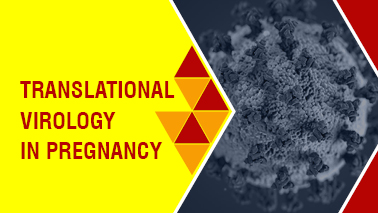
Translational virology: The process of creating new information and scientific evidence for healthcare requirements is known as translational virology. As with the creation of COVID-19 drugs and vaccines, governmental organisations and authorities have a significant influence on this process. Basic, preclinical, and clinical research, drug production, and drug regulation and approval are the several subfields of translational virology.
Translational virology in pregnancy: Pregnant women's health and the health of their unborn children are being adversely affected by more frequent viral pandemics like the severe acute respiratory syndrome coronavirus 2 (SARS-CoV-2). Depending on the virus, infection during pregnancy may increase the risk of more serious prenatal sickness, preterm birth, preeclampsia, stillbirth, and/or a long-term increase in the risk of neuropsychiatric disorder in the children.
To understand the effects of viral infections during pregnancy on the foetus, usually starts with in vitro and in vivo models, concentrating on the placental reaction to infection
Some of the viruses that associated with pregnancy are:
Tags
Vaccine Conferences and Meetings 2025
Influenza Conferences
Medical Virology Meetings
Virology Conferences 2025 Europe
Virology Meetings 2025
Epidemiology Conferences 2025 Europe
European Congress on Virology
Virology Conferences 2025
Ebola Conferences 2025
Microbiology Conferences
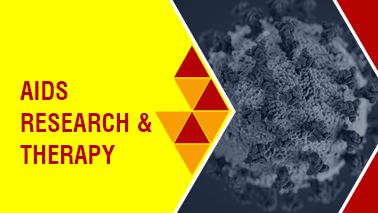
The term "AIDS" refers to acquired immunodeficiency syndrome, a condition occurred by severe immunosuppression that can result in opportunistic infections, secondary neoplasms, and neurological symptoms. AIDS is brought on by the retrovirus HIV (human immunodeficiency virus), and it is characterised by immunodeficiency.
Over the past few decades, researchers have learned a lot about the human immunodeficiency virus (HIV) and the sickness it causes, acquired immunodeficiency syndrome (AIDS). But more study is needed to help the millions of people whose health is still at jeopardy as a result of the global HIV/AIDS pandemic.
AIDS Therapy:
Although there is currently no treatment for AIDS, HIV and its consequences can be managed with medicines. Treatments aim to lower the amount of HIV in your body, maintain a strong immune system, and lessen any difficulties you might experience.
Despite the fact that there is no known cure for acquired immunodeficiency syndrome (AIDS), medications have shown to be quite effective in combating HIV and its adverse effects. Drug treatments aim to keep your immune system healthy, lower your body's amount of HIV, and prevent future issues
Here is a list of some of the medications that the FDA has approved for use in treating HIV and AIDS.
Tags
Microbiology Conferences
Ebola Conferences 2025
Medical Virology Meetings
COVID-19 Conferences
Virology Conferences 2025
Virology Meetings 2025
Virology Conferences 2025 USA
American Virology Meetings
Antiviral Research Meetings
Virology Conferences
Virology Conferences 2025 Europe
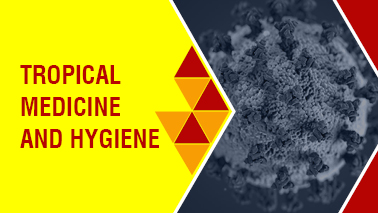
Tropical medicine is a field of medicine that focuses on treating infectious and non-infectious disorders in tropical regions.
The three major infections in the tropics are
In addition to a wide range of noncommunicable disorders like vitamin deficiency, snakebite, scorpion sting, and toxin-related cardiac and neurologic symptoms, tropical medicine deals with uncommon and exotic parasite and bacterial illnesses. Consequently, this field includes internal medicine in addition to microbiology, virology, parasitology, and epidemiology.
Although it plays a significant role in global health, tropical medicine focuses more on the specific tropical infections that affect low-resource areas. It pays close attention to the pathogens, their vectors, how they spread, how to treat and prevent them, as well as how to create new drugs, insecticides, diagnostics, and vaccines to fight these diseases.
Hygiene:Hygiene is the practise of keeping oneself and one's surroundings clean, especially to prevent illness or the spread of disease. By maintaining adequate cleanliness, one can avoid contracting many contagious diseases, including fecal-oral infections. It makes a substantial contribution to the promotion of improved health and wellness. However, due to a lack of access to needs like clean water and soap, maintaining personal hygiene can be challenging in many parts of the world.
The various forms of hygiene include:
Tags
Virology Meetings 2025
Medical Virology Meetings
Microbiology Conferences
European Congress on Virology
American Virology Meetings
Antiviral Research Meetings
AIDS Research and Therapy Conferences
COVID-19 Conferences
Virology Conferences 2025
Virology Conferences 2025 USA
Ebola Conferences 2025
Asian Virology Conferences
Influenza Conferences
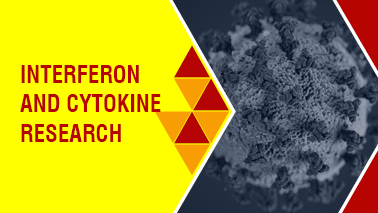
Interferon:
Initially, interferons were thought to be an antiviral agent that prevented viral replication in mammalian cells. They are secreted by infected cells, where they cause cytokine synthesis by the innate immune system, as well as activity in natural killer cells and antigen presentation.
In response to pathogens, host lymphocytes release interferons, which are glycoprotein cytokines. Interferons interact with receptors that trigger STAT signalling complexes to activate or upregulate immune cells via activating or upregulating STAT signalling. In the end, this results in the removal of the pathogen or tumour cells from the organism.
Cytokine Research:
Currently, cytokines are referred to as "immunomodulating agents," or molecules that alter or modify the immune system response. Small, membrane-bound proteins known as cytokines serve as cell signalling molecules. They encourage cell migration to regions of inflammation, infection, and injury and facilitate cell-to-cell communication during immune responses.
Cytokines plays a crucial role in controlling the growth and activity of the immune system cells and blood cells. When injected subcutaneously, intramuscularly, or intravenously, they can be used to treat cancer and/or assist in preventing or managing chemotherapy side effects. By transmitting signals that can result in aberrant cell death and lengthen the lifespan of healthy cells, they also contribute to the promotion of anti-cancer activity.
There are different types of cytokines, including
Tags
Microbiology Conferences
Virology Conferences 2025 USA
Ebola Conferences 2025
Medical Virology Meetings
Vaccine Conferences and Meetings 2025
AIDS Research and Therapy Conferences
Virology Conferences
Virology Conferences 2025 Europe
Pathology Conferences
Influenza Conferences
Antiviral Research Meetings
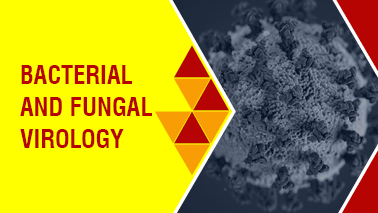
Bacterial virology:
Bacteria are prokaryotic, unicellular organisms with a single cell and no real nucleus. They also lack some other organelles.
Bacteriophages are so little that they do not even have a single cell. They just have a single strand of DNA that is encased in a protein sheath. Bacteriophages can cause bacteria to erupt and release a high number of new phages when they infect bacteria.
The billions of bacteria and bacteriophages found in the human body are necessary for a typical, healthy life. Because of the prevalence of bacteriophages and their connections to bacteria, bacteriophage study has grown to be a significant area of biology.
Fungal virology:
Mycoviruses, sometimes called mycophages, are viruses that affect fungi. In comparison to the other 70% of mycoviruses, which have double-stranded RNA genomes and isometric particles, only 30% of them have positive-sense, single-stranded RNA genomes.
Numerous viruses associated with fungi infect their hosts latently. With the exception of killer-immune features in yeasts, smuts, and hypovirulence in the chestnut blight fungus, fungi do not have well-established properties that can be directly related to viral infection.
Most common fungal infections include:
Tags
Pathology Conferences
Virology Conferences
COVID-19 Conferences
Epidemiology Conferences 2025 Europe
Virology Conferences 2025 USA
Vaccine Conferences and Meetings 2025
European Congress on Virology
AIDS Research and Therapy Conferences
American Virology Meetings
Virology Conferences 2025 Europe
Microbiology Conferences

The scientific study of microbial cell processes and characteristics is known as cellular microbiology. This field combines the methods and concepts of traditional cell biology and microbiology. Examples of cellular microorganisms include bacteria, archaea, fungi, and protists. Cells can be found in one or more in microorganisms.
By utilising cell biology techniques and pathogenic bacteria as research tools, cellular microbiology seeks to better understand microbial pathogenicity. Microbe poisons and virulence factors have been utilised for decades to influence and investigate eukaryotic cell processes.
Because putting a pure toxin on a cell doesn't always give you the whole picture, it is crucial to comprehend the toxin's role in pathogenicity, how it supports the microbe, how it is created, and the co-evolution of the toxin and its host-cell equivalents.
Emerging technologies and cellular microbiology models of infection include:
Tags
COVID-19 Conferences
Virology Conferences 2025 Europe
Medical Virology Meetings
American Virology Meetings
Influenza Conferences
Asian Virology Conferences
Virology Conferences
Epidemiology Conferences 2025 Europe
Virology Conferences 2025 USA
Microbiology Conferences
AIDS Research and Therapy Conferences
European Congress on Virology
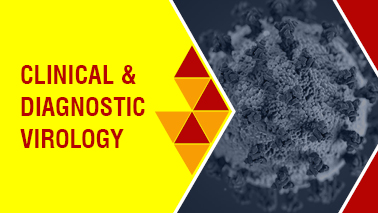
Due to the convergence of numerous independent advances, diagnostic virology is quickly advancing into the clinical medicine mainstream.
First and foremost, the development of antiviral medications has dramatically boosted the demand for accurate viral diagnosis.
Second, significant new methods for viral diagnostics have been made possible by technological advancements, particularly in the field of nucleic acid chemistry.
Third, the HIV/AIDS epidemic has significantly increased the number of people who are at risk for opportunistic viral infections.
Finally, the integration of molecular approaches into the treatment of chronic viral diseases is being revolutionised by the contemporary therapy of HIV infection and hepatitis C.
Methods used in diagnostic virology
Clinical virology is the study of viral diseases and the use of traditional, molecular, or immunological methods for laboratory diagnosis, treatment (antiviral medications), and control (vaccines and biocontainment).
Molecular methods, detection and molecular typing, and the application of molecular biology techniques to clinical virology have all significantly improved enteroviral diagnosis. Sensitivity and specificity have improved significantly.
Tags
European Congress on Virology
Medical Virology Meetings
American Virology Meetings
Epidemiology Conferences 2025 Europe
Antiviral Research Meetings
AIDS Research and Therapy Conferences
Asian Virology Conferences
Virology Conferences 2025 Europe
Virology Conferences 2025 USA
Virology Conferences 2025
COVID-19 Conferences
Influenza Conferences
Virology Meetings 2025
Virology Conferences
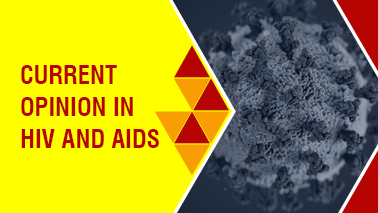
Antiretroviral therapy (ART) has been ground-breaking in reducing the severity of HIV from a fatal illness to a tolerable chronic condition, but it does not offer a cure. Patients must commit to taking drugs for the rest of their lives and deal with problems such inadequate viral suppression, social stigma, drug resistance, adverse drug reactions, and unaffordable expenditures. Since finding a cure for HIV is a highly desirable aim for patients.
Additionally, pre-exposure prophylaxis (PrEP), an HIV medication used to prevent HIV, is an option for those who are HIV-negative and at risk for HIV infection. But regrettably, in 2020, there were an anticipated 30,403 new HIV infections in the United States and 1.5 million new HIV infections worldwide. We require a potent arsenal of HIV preventive strategies that are broadly available to everybody who could benefit from them if we are to control and ultimately eradicate HIV globally.
The long-term objective is to create a vaccine that can prevent HIV infection in all populations. However, even if a vaccine only offers partial protection to those who receive it or even if it only offers partial protection by lowering the risk of infection, it could still have a significant impact on transmission rates and aid in the control of the pandemic, especially for populations with a high risk of contracting HIV. A partially successful vaccination might lower the number of HIV infections, which would lower the number of carriers of the virus. We can put an end to the epidemic by drastically lowering the number of new infections.
Tags
Epidemiology Conferences 2025 Europe
Asian Virology Conferences
Virology Conferences 2025
Pathology Conferences
Ebola Conferences 2025
Microbiology Conferences
COVID-19 Conferences
Vaccine Conferences and Meetings 2025
AIDS Research and Therapy Conferences
Virology Conferences
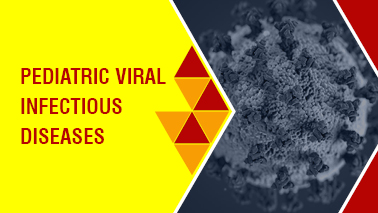
A virus is a tiny infectious organism that must enter a living cell in order to proliferate. It is much smaller than a fungus or bacterium.
Although viral infections can affect people of all ages, they frequently seem to be more prevalent among babies and young children. The majority of viral infections in children are not serious, although they can cause a variety of conditions like colds, sore throats, vomiting, diarrhoea, and fever with a rash. Due to extensive inoculation, several viral diseases that might cause more severe sickness, such the measles, are now less frequent.
Children and teenagers with viral diseases caused by a variety of viral viruses are regularly treated by doctors. These infections could present in a variety of ways. According to the patient's age and immunocompetence, the clinical signs and symptoms of various diseases differ and are unique to the virus that is causing the infection. Most kids with viral infections recover without any treatment. Fever and bodily pains or discomfort are the most usual symptoms of viral infections.
The majority of viral infections in children are characterised by self-limited sickness that can be managed symptomatically and result in full recovery.
The following are common childhood diseases:
Tags
Pathology Conferences
AIDS Research and Therapy Conferences
COVID-19 Conferences
Medical Virology Meetings
Epidemiology Conferences 2025 Europe
Virology Meetings 2025
Virology Conferences 2025
Asian Virology Conferences
Microbiology Conferences
Ebola Conferences 2025
European Congress on Virology
Virology Conferences 2025 USA
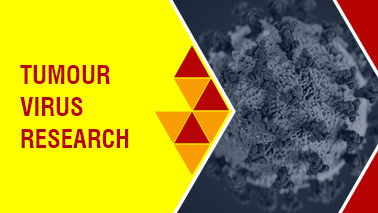
Tumour virus infections are usually caused by oncogenic DNA or RNA viruses.
Two main mechanisms exist for how they can cause cancer.
Tumor virus infections can undoubtedly result in major health issues in both humans and animals. The most serious health issue associated with these infections is tumour induction. Depending on the type of nucleic acid they contain, tumour viruses can be classified as either DNA viruses or RNA viruses.
Human tumour viruses cause at least 15% of all cases of human cancer. Currently known causes of human tumours include the small DNA tumour viruses known as human papillomaviruses (HPVs) and Merkel cell polyomavirus (MCPyV)
Tags
Antiviral Research Meetings
Virology Conferences
Pathology Conferences
Vaccine Conferences and Meetings 2025
COVID-19 Conferences
American Virology Meetings
Virology Conferences 2025 USA
Medical Virology Meetings
Asian Virology Conferences
Virology Conferences 2025
Ebola Conferences 2025
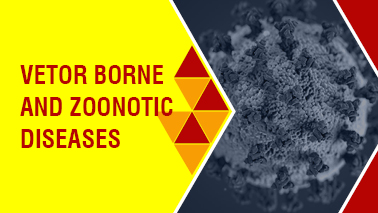
Vector-Borne Diseases:
vectors are living organisms that can spread contagious infections from animals to people or between humans. Insects that feed on blood from an infected host (human or animal) and consume disease-causing bacteria do make up a large portion of these vectors. Once the pathogen has multiplied, it is then transmitted into a new host. The infection can often be passed on for the rest of the vector's life through every consecutive bite or blood meal once the vector becomes infectious.
Infections that are transmitted through the bite of an infected arthropod species, such as a mosquito, tick, triatomine bug, sandfly, or blackfly, are known as vector-borne diseases. Arthropod vectors are particularly vulnerable to environmental changes due to their cold-blooded (ectothermic) nature.
A few diseases that are spread by vectors include
Zoonotic Diseases:
A zoonosis is an infectious illness that has spread from an animal to people. Zoonotic pathogens, which can infect humans through direct contact, food, water, the environment, or unconventional agents, can be bacterial, viral, parasitic, or other types of pathogens.
All infectious diseases, even those that have already been identified, include zoonoses to a large extent. Certain diseases, including as HIV, start off as zoonotic strains before evolving into forms that are exclusive to humans. Two zoonoses that can cause repeated disease outbreaks include salmonellosis and the ebola virus. Others, such as the brand-new coronavirus that causes COVID-19, have the capacity to spread globally and trigger pandemics.
Tags
Antiviral Research Meetings
Asian Virology Conferences
AIDS Research and Therapy Conferences
European Congress on Virology
Virology Conferences 2025 USA
Vaccine Conferences and Meetings 2025
Virology Conferences
COVID-19 Conferences
Microbiology Conferences
Virology Conferences 2025
Influenza Conferences
Virology Meetings 2025
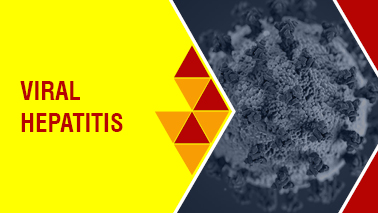
Viral hepatitis is an infection that damages and inflames the liver. Hepatitis A, B, C, D, and E are a few of the viruses that cause the disease. Acute infections caused by the hepatitis A and E viruses are common. The hepatitis B, C, and D viruses can result in acute and chronic illnesses.
Hepatitis-causing viruses can be aggravated by toxins, excessive alcohol intake, some medicines, and particular medical conditions.
Symptoms:
Many patients with hepatitis A, B, C, D, or E may experience minor symptoms, if any at all. However, more severe symptoms may arise from each viral variant. Fever, malaise, lack of appetite, diarrhoea, nausea, abdominal pain, dark urine, and jaundice are some of the symptoms of hepatitis A, B, and C. In some instances, the virus can also result in a persistent liver infection, which may later progress to cirrhosis (liver scarring) or liver cancer. Death is a possibility for some patients.
Treatment:
Hepatitis B virus vaccinations are accessible and reliable (HBV). Additionally, this vaccine suppresses the growth of the hepatitis D virus (HDV), and when administered at delivery, it significantly lowers the chance of transmission from mother to child.
Antiviral medications can be used to treat chronic hepatitis B infection. Cirrhosis can be treated to delay its course, lower the risk of liver cancer, and increase long-term survival. Treatment is only necessary for a small percentage of those with chronic hepatitis B infection. Additionally, there is a vaccination for hepatitis E (HEV), however it is not yet generally accessible. HBV and HEV do not have specific therapies, and hospitalisation is typically not necessary. Because these infections have a significant impact on liver function, it is advisable to avoid using unneeded drugs.
Tags
Virology Conferences 2025 USA
Virology Conferences 2025
Influenza Conferences
Virology Conferences
Antiviral Research Meetings
AIDS Research and Therapy Conferences
Vaccine Conferences and Meetings 2025
Microbiology Conferences
Pathology Conferences
Medical Virology Meetings
American Virology Meetings
Virology Conferences 2025 Europe
Epidemiology Conferences 2025 Europe
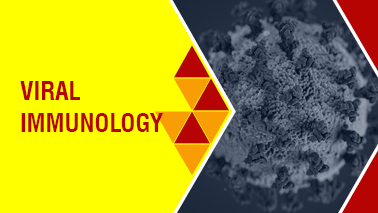
The study of immune responses to viruses is known as viral immunology. The immune system refers to a group of cells and proteins that work to defend the skin, nasal passages, intestinal tract, and other areas against external antigens like microbes (organisms including bacteria, fungus, and parasites), viruses, cancer cells, and poisons.
Viruses are necessary intracellular parasites that rely on their host to support their reproduction and spread to neighbouring cells. Human viral infections rarely cause mortality, despite the fact that they are extremely cytolytic to individual cells.
The study of immunity is beneficial to many medical professions, including rheumatology, virology, allergology (dermatology), bacteriology, cancer, and transplantation medicine.
Immunity is categorized in two types:
Medications:
Acyclovir (Zovirax), famciclovir (Famvir), and valacyclovir (Valtrex) are medications used to treat viral infections. They are effective against herpesvirus, especially herpes zoster and herpes genitalis. Ibuprofen and acetaminophen are medications used to treat viral fever.
Tags
American Virology Meetings
Antiviral Research Meetings
Virology Conferences 2025
Virology Meetings 2025
Asian Virology Conferences
Pathology Conferences
Virology Conferences 2025 USA
Virology Conferences 2025 Europe
COVID-19 Conferences
Ebola Conferences 2025

Viral oncology is a branch of oncology that focuses on using viral agents to treat malignancies. Oncovirus infections are widespread, but they rarely lead to malignancy. For the development of cancer, one or more additional insults, such as persistent inflammation, environmental mutagens, or immunosuppression are needed.
Oncovirus types are categorised into:
Hepatitis C virus (HCV) and human T-cell lymphotropic virus type 1 are examples of oncogenic RNA viruses.
Viruses are used to infect and kill cancer cells as part of an immunotherapy technique called "oncolytic viruses." Long considered a means of eradicating cancer cells directly, oncolytic viruses. However, a growing amount of evidence points to the possibility that some oncolytic viruses may function, at least in part, by inducing an immunological reaction in the body against the malignancy.
Treatment:
Currently, only one oncolytic virus therapy has been given FDA approval to treat cancer:
T-VEC (Imlygic®) is a modified herpes simplex virus (HSV) that targets tumour cells and encourages their demise. It is authorised for specific groups of melanoma patients.
Tags
Pathology Conferences
Virology Meetings 2025
Medical Virology Meetings
Asian Virology Conferences
Microbiology Conferences
Ebola Conferences 2025
Influenza Conferences
Virology Conferences
Virology Conferences 2025 Europe
Epidemiology Conferences 2025 Europe
Virology Conferences 2025
COVID-19 Conferences
AIDS Research and Therapy Conferences
American Virology Meetings
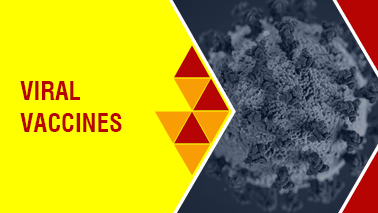
Viral vaccines are used to prevent viral infections, usually these contains either attenuated or inactivated viruses.
Others contain antigens, which are fragments of viruses. Some contain complete viruses that have been damaged or killed. In either situation, the vaccination provides a patient with knowledge about the virus so that their immune system can train to identify it and defend itself. Unlike viruses that occur naturally, viral vaccinations do not infect the body. They can be injected (into the muscle or subcutaneously) or taken orally.
Types of viral vaccines:
Although vaccines help to protect patients from infection, they can also have a number of negative side effects. These are indications that the immune system is strengthening its defences. The most typical side effects are as follows:
Tags
Influenza Conferences
Vaccine Conferences and Meetings 2025
Epidemiology Conferences 2025 Europe
Antiviral Research Meetings
European Congress on Virology
Pathology Conferences
Virology Conferences 2025 Europe
Virology Meetings 2025
Medical Virology Meetings
Virology Conferences
COVID-19 Conferences
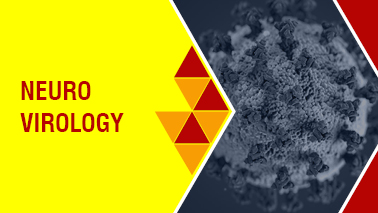
Neuro virology is a multidisciplinary area that combines molecular biology, immunology, clinical neuroscience, and virology. The study of viruses that can infect the neurological system is the primary focus of the field. Additionally, the discipline investigates the use of viruses for gene therapy, eradicating undesirable populations of brain cells, and tracing neuroanatomical circuits.It also covers the diagnosis, epidemiology, and creation of particular antiviral drugs for disease treatment of viral infections of the CNS.
A good illustration of the latter is the usage of acyclovir to treat herpes simplex encephalitis. As a result, it is a field that has a lot to do with both human disease and many elements of neurology. Neurovirological investigations from both the clinical and fundamental levels occasionally produce complementary data.
Specific laboratory methods that used in neurovirology are as follows:
Tags
Microbiology Conferences
Influenza Conferences
COVID-19 Conferences
Antiviral Research Meetings
AIDS Research and Therapy Conferences
Virology Conferences 2025
Medical Virology Meetings
Virology Meetings 2025
American Virology Meetings
Virology Conferences 2025 Europe
Ebola Conferences 2025
Virology Conferences
Vaccine Conferences and Meetings 2025

Foreign genetic material, such as DNA or RNA, is introduced into host cells through a process called gene delivery. Gene expression must be induced via gene delivery into the host cell's DNA. The ability of the foreign gene delivery to remain stable inside the host cell and to either integrate into or replicate independently of the genome is necessary for successful gene delivery. Gene therapy for human genetic diseases primarily requires gene delivery systems. One of the most promising treatments for a variety of diseases, including inherited disorders, viral infections, and cancers, is gene therapy.
Gene delivery, which also has applications in the genetic modification of crops, is a crucial step in gene therapy for the introduction or silencing of a gene to achieve a therapeutic outcome in patients.
For distinct types of cells and tissues, there are numerous various methods of gene delivery.Transfection refers to the process of delivering genes to animals. Transformation refers to the process of delivering genes to bacteria or plants.
There are two types of vectors used for gene delivery:
Tags
Virology Conferences 2025 USA
Vaccine Conferences and Meetings 2025
European Congress on Virology
Pathology Conferences
American Virology Meetings
Virology Conferences
Ebola Conferences 2025
Virology Meetings 2025
Microbiology Conferences
AIDS Research and Therapy Conferences
Epidemiology Conferences 2025 Europe
COVID-19 Conferences
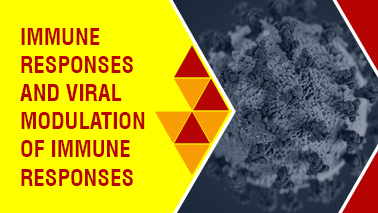
The immune response is how your body recognises and protects itself against intruders, which can include a wide range of microorganisms such as bacteria, viruses, parasites, and fungus that, if left unchecked, can seriously harm the health of the host organism.
There are two separate components Innate and adaptive immune responses, which combine to defend against pathogens.
Pattern recognition receptors are used to identify and find pathogens (PRR). These receptors are surface-mounted macrophage components that can bind external invaders and start cellular signalling within the immune cell.
Betaherpesviruses like HCMV have a significant impact on host cell physiology and encode a wide range of functions that regulate both the immune response and the infected host cell (Mocarski, 2002, 2004). Major structural and non-structural proteins influence adaptive antibody or T-lymphocyte immunity as well as host cell transcriptional repression (Saffert and Kalejta, 2006; Tavalai et al., 2006); responses to interferon (Child et al., 2004; Khan et al., 2004); cell-intrinsic responses (Abate et al., 2004; Goldmacher, 2004); and natural killer (NK) lymphocytes.
The balance between host clearance and viral escape mechanisms may control many aspects of viral pathogenesis since the host immune components that are targets of HCMV modulation are also key host functions in preventing virus infection. HCMV appears to be able to avoid the full force of host innate and adaptive immunity, which allows the virus to survive, by lessening the total impact of antiviral defences.
Tags
Virology Conferences
AIDS Research and Therapy Conferences
Virology Conferences 2025 USA
Virology Conferences 2025
European Congress on Virology
Influenza Conferences
COVID-19 Conferences
Vaccine Conferences and Meetings 2025
Antiviral Research Meetings
Medical Virology Meetings
Asian Virology Conferences
Virology Conferences 2025 Europe
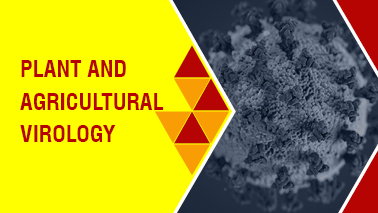
Plant and agricultural virology is the study of viruses that infect plants. Virus connections with plants frequently lead to growth and yield limiting disease symptoms, ultimately leading to economic losses and continue to pose a threat to food security, especially in the developing world. Because there are no treatments that can be applied to plants in the field to control viral diseases in the same way that fungicides control fungal diseases, viral disease control is mainly achieved through the use of resistant plants or by preventing virus spread between plants.
The plant virology group studies the epidemiology and population dynamics of known viruses, as well as the discovery of new plant viruses and implementation of appropriate diagnostic tools for their detection. The most effective methods for plant virus eradication are in vitro techniques. In vitro thermotherapy-based methods, such as combining thermotherapy with shoot tip culture, chemotherapy, micrografting, or shoot tip cryotherapy, have been successfully established for the efficient eradication of various viruses from nearly all of the most economically important crops. Recent improvements in DNA sequencing technologies have enabled a paradigm shift in the discovering of novel plant virus variety, as well as changing existing ideas about viral evolution and interactions with their hosts.
Tags
Antiviral Research Meetings
Vaccine Conferences and Meetings 2025
Virology Conferences 2025 Europe
American Virology Meetings
Virology Meetings 2025
COVID-19 Conferences
Microbiology Conferences
Influenza Conferences
Medical Virology Meetings
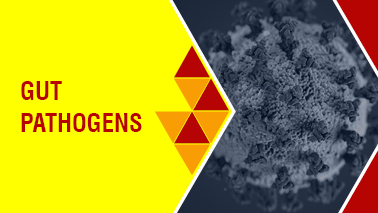
The human gastrointestinal (GI) tract is one of the greatest interfaces (250-400 m2) in the human body between the host, environmental factors, and antigens. The human gastrointestinal (GI) tract is harbours a complex and dynamic population of bacteria known as the gut microbiota, which has a significant impact on the host during homeostasis and disease. Several factors contribute to the development of the human gut microbiota during infancy. Diet is considered as one of the most important factors in creating the gut microbiota throughout life. Intestinal bacteria play a crucial role in maintaining immune and metabolic homeostasis and protecting against pathogens.
Tags
Virology Meetings 2025
AIDS Research and Therapy Conferences
American Virology Meetings
Ebola Conferences 2025
Virology Conferences 2025
Medical Virology Meetings
Virology Conferences 2025 Europe
Vaccine Conferences and Meetings 2025
Influenza Conferences
Microbiology Conferences
Antiviral Research Meetings
European Congress on Virology
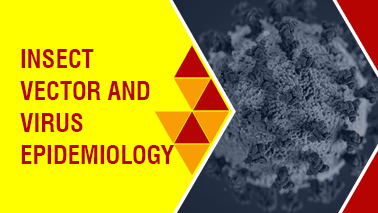
Insect vector biology is deals with an insect that transmits pathogens, as well as its interactions with hosts and disease-causing organisms.
The study of viruses and their hosts is known as viral epidemiology. Viral disease transmission is an essential feature of viral epidemiology. Viral transmission modes include direct contact and contact with infectious fomites, contaminated food or drink, and insects.
Entomologists and epidemiologists try to predict the potential for development of an epidemic or pandemic, as well as to find effective measures to contain vector and virus outbreaks. They must try to account for a wide range of insect, host, and virus-related parameters, such as mode of transmission, length of infection, window of transmissibility, population density, living conditions, environment, and stability.
Tags
Medical Virology Meetings
AIDS Research and Therapy Conferences
Vaccine Conferences and Meetings 2025
Virology Conferences
Pathology Conferences
Virology Meetings 2025
Asian Virology Conferences
Microbiology Conferences
Virology Conferences 2025 USA
Ebola Conferences 2025
Epidemiology Conferences 2025 Europe
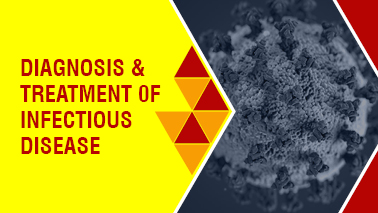
Microorganisms including bacteria, viruses, fungus, and parasites cause infectious disorders.
Doctors suspect an infection based on symptoms, physical examination findings, and risk factors. First, doctors determine whether the patient is suffering from an infection or another sort of illness. Once doctors have determined that the patient has an infection, they must determine which microorganism is causing the infection. An infection can be caused by a variety of bacteria. For example, viruses, bacteria, and, in rare cases, fungi can all cause pneumonia. Each microorganism is treated differently. When a microbe is found, doctors can perform susceptibility testing to determine which medications are most effective against it, allowing effective treatment to begin sooner.
Tags
European Congress on Virology
Microbiology Conferences
AIDS Research and Therapy Conferences
Influenza Conferences
Virology Meetings 2025
Virology Conferences 2025 USA
Asian Virology Conferences
American Virology Meetings
Virology Conferences 2025 Europe
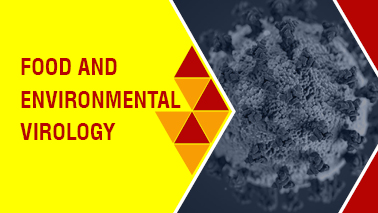
The study of pathogenic virus transmission through the environment (water, air, soil, etc.) and foods is known as food and environmental virology.
Viruses are transmitted through foods in the form of very minute particles that cannot multiply but may be inactivated. Some of these viruses are found in infected animals' meat, milk, and other products. Human foodborne viral infections are mainly hepatitis A and gastroenteritis caused by norwalk-like viruses, which are shed in human feces and contaminated foods from sick people's hands or through sewage. These viruses are among the leading causes of reported foodborne disease across the globe. Heat and a few other methods can inactivate viruses in foods before they are eaten.
The coronavirus pandemic has raised awareness of viruses' role as pathogens of concern. Virus presence and transmission are investigated using molecular genetic approaches, such as different PCR applications. Model viruses in cell culture can be used to determine how long viruses retain infectivity in various conditions and environments, such as on indoor surfaces, in air, and in water. These tools are used to find solutions to viruses spreading in the environment. In the absence of effective medications, other measures, such as hygiene, are crucial in preventing the spread of viral illnesses.
Tags
Virology Conferences
Virology Conferences 2025 USA
Microbiology Conferences
Antiviral Research Meetings
Virology Conferences 2025
American Virology Meetings
Virology Conferences 2025 Europe
Virology Meetings 2025
Pathology Conferences
Medical Virology Meetings
European Congress on Virology
Ebola Conferences 2025
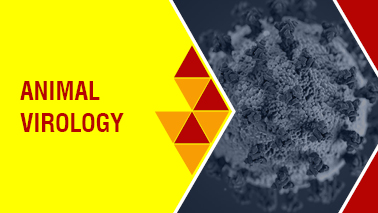
Virology is the study of the infectious agents that cause disease in humans and animals. This covers the investigation of virulence underlying processes, virus epidemiology, and immunological responses to viruses.
It includes research on the pathogenicity, diagnostics, identification, epidemiology, and immunological responses to a variety of viral diseases, such as avian metapneumovirus, infectious bronchitis virus, feline calicivirus, mosquito-borne arboviruses, bluetongue virus, and schmallenberg virus.
Methods used include: diagnostic identification methods, ELISA, flow cytometry, transcriptomic and genomic technologies, epidemiology, proteomics and infection models.
The objectives of the research are to investigate the transmission channels and behaviour of pathogens during infections and to use this knowledge to develop more effective therapeutic strategies or vaccinations to enhance the health of animals.
Animal virology encompasses a variety of viral families associated with a wide range of clinical diseases. These include the areas listed below:
Tags
European Congress on Virology
Antiviral Research Meetings
COVID-19 Conferences
Virology Conferences 2025 Europe
Epidemiology Conferences 2025 Europe
Virology Conferences 2025
Virology Meetings 2025
Microbiology Conferences
Virology Conferences 2025 USA
Influenza Conferences
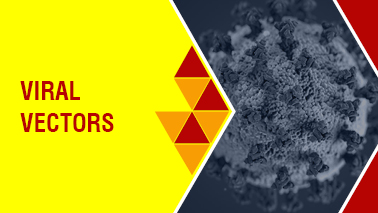
Viral vectors are tools used to deliver genetic material into cells. This procedure can be performed inside a living organism (in vivo) or in cell culture (in vitro). Viruses have evolved specific systems for transporting their genomes inside the cells they infect. Modified viruses are used as viral vectors (or 'carriers') in gene therapy to shield the new gene from degradation while delivering it to the "gene cassette" in target cells. The delivery of genes or other genetic material by a vector is referred to as transduction, and the infected cells are referred to as transduced.
Viral vectors successfully persuade target cells to take the new gene, remove it from the virus particle, and transport it to the cell nucleus. Viral vectors can be used in gene therapy to transmit functional genes to replace defective genes and cure genetic disorders. Viral vectors can be used as a vaccine platform to express and deliver pathogenic antigens in order to stimulate an immune response by mimicking a natural infection. Viral vectors can also be used to specifically target and kill tumour cells in oncolytic therapies.
There are various types of viral vectors that can be used to carry nucleic acids into the genetic makeup of cells, including retrovirus, lentivirus, adenovirus, adeno-associated virus, and herpes simplex virus each having their own set of benefits and drawbacks for certain applications.
Tags
AIDS Research and Therapy Conferences
Virology Conferences 2025
Ebola Conferences 2025
American Virology Meetings
Virology Conferences 2025 USA
Virology Conferences
Vaccine Conferences and Meetings 2025
COVID-19 Conferences
Virology Conferences 2025 Europe
Influenza Conferences
Medical Virology Meetings
Asian Virology Conferences
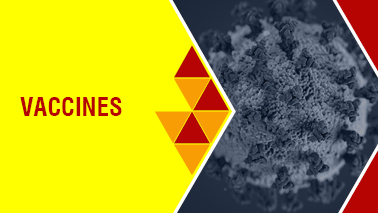
A vaccination is a sort of medication that prepares the body's immune system to combat a disease it has not previously encountered. Vaccines are intended to prevent disease rather than to treat an existing illness.
Vaccines can be prophylactic ((to reduce the consequences of a future infection by a natural or "wild" pathogen), or therapeutic (to treat a disease that has already manifested, such as cancer). Some vaccines provide full sterilising immunity, which fully prevents infection.
Vaccination is a term used to describe the administering of vaccines. The best way to avoid infectious diseases is by vaccination, which has also led to the global eradication of smallpox and the restriction of diseases like polio, measles, and tetanus from much of the world.
An antigen can be used in a number of ways, including:
Tags
European Congress on Virology
Pathology Conferences
Epidemiology Conferences 2025 Europe
Virology Conferences
Virology Meetings 2025
Influenza Conferences
Microbiology Conferences
Virology Conferences 2025 Europe
Antiviral Research Meetings
American Virology Meetings
Vaccine Conferences and Meetings 2025
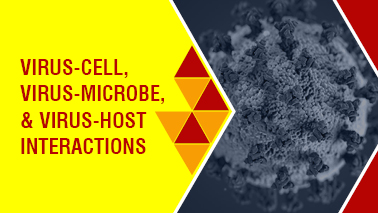
A virus is an infectious microorganism composed of a nucleic acid (DNA or RNA) covered by a protein coat. A virus cannot replicate on its own; rather, it must infect cells and utilise the components of the host cell to replicate. Viruses frequently result in the death of the host cell, causing harm to the host organism. Examples of well-known viruses that cause human disease are AIDS, COVID-19, measles, and smallpox.
Virulence is the degree of pathogenicity of a pathogen (bacteria, fungi, or viruses) and is determined by the pathogen's capacity to penetrate and proliferate within the host.
Viruses continue to be a major contributor to the global burden of illness via acute and chronic infections that have a significant economic impact in addition to causing an increase in mortality and morbidity. Despite the enormous progress in our understanding of the antiviral immune response and the accessibility of therapies, the prevalence of existing and novel viral infections, particularly in developing nations, is on the rise. Antiviral resistance of hepatitis C virus (HCV), influenza A virus (IAV), herpes simplex virus (HSV), human cytomegalovirus (HCMV), and human immunodeficiency virus (HIV) is a major problem. Multiple processes, including polymerase infidelity, contribute to the accumulation of mutations in the viral genome, which is one of the primary causes of rising resistances. In light of this, the World Health Organization (WHO) and the United Nations have advocated for a more effective control of viral illnesses.
Virus-host interaction is defined as the process by which viruses sustain themselves within their host species on a molecular, cellular, and population level.
Virus–host interaction is a complex phenomena that is frequently virus- and host cell-specific.
The study of virus–host cell interactions encompasses the entirety of virology and provides some of the most crucial insights into this discipline. As viruses are intracellular parasites, they rely on their host cells for the energy, macromolecular synthesis machinery, and workbenches necessary for genome replication and particle assembly. Consequently, viruses have evolved a vast array of ways for exploiting normal host cell activities. This exploitation is frequently accompanied with damage to the host cell, which may be one of the primary causes of the pathology and disease induced by viruses.
Our understanding of animal viruses has expanded dramatically during the past few decades. These advancements have led to a thorough understanding of the structure and makeup of the viral genome and the virus particle, as well as the replication mechanisms employed by viruses and the regulation of viral gene expression during infection. Understanding the virus's growth cycle has proven to be easier than understanding the virus's interaction with the host cell.
Tags
Ebola Conferences 2025
Epidemiology Conferences 2025 Europe
Asian Virology Conferences
Virology Conferences 2025 Europe
Pathology Conferences
Virology Conferences 2025 USA
COVID-19 Conferences
Antiviral Research Meetings
Influenza Conferences
European Congress on Virology
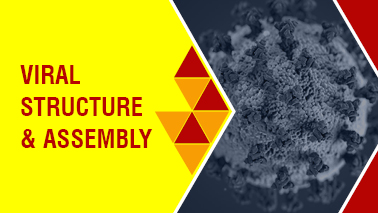
Viruses are smaller and simpler than unicellular microbes, because they carry only one type of nucleic acid, either DNA or RNA, never both. As viruses lack ribosomes, mitochondria, and other organelles, they rely entirely on their host cells for energy production and protein synthesis. They only replicate within the cells of the host they infect. In contrast to microorganisms, many viruses may replicate from their genome, a single nucleic acid molecule, in appropriate cells; their nucleic acid alone is infectious. Outside a susceptible cell, the viral particle is metabolically inert, similar to a bacterial spore; but, while reproducing within a cell, it shows all the characteristics of life.
The new classification of microorganisms is known as filterable viruses. Filtration investigations have revealed that the size of virus particles (virions) ranges from around the size of the tiniest unicellular bacteria (300 nm) to things just larger than the largest protein molecules (20 nm). The virion of simple viruses consists of a single molecule of nucleic acid covered by a protein coat, the capsid; the capsid and its nucleic acid constitute the nucleocapsid.
Protozoa, fungi, bacteria, mycoplasmas, rickettsiae, and chlamydiae are the unicellular microorganisms in descending order of size and complexity. They always have DNA as their genetic information repository, RNA, and their own machinery for creating energy and macromolecules. Microorganisms increase in size by synthesizing their own macromolecular components (nucleic acid, protein, carbohydrate, and lipid) and by undergoing binary fission.
Protein-protein interactions between viral structural and non-structural proteins and the coordinated action of host factors comprise the process of virus assembly.
Tags
European Congress on Virology
American Virology Meetings
COVID-19 Conferences
Virology Conferences 2025
Asian Virology Conferences
Virology Conferences
Virology Conferences 2025 USA
Ebola Conferences 2025
Epidemiology Conferences 2025 Europe
Influenza Conferences
Vaccine Conferences and Meetings 2025
Antiviral Research Meetings
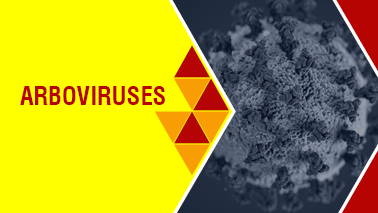
When a group of viruses infects a person by the bite of an infected arthropod (insect), such as a tick or mosquito, it is referred to as an arboviral disease. Typically, these infections take place in the warm months when ticks and mosquitoes are most active. Arboviruses can affect both plants and animals, including people. Arbovirus infection symptoms in humans typically appear 3–15 days after virus exposure and remain for three–four days. Fever, headaches, and malaise are the most typical clinical signs of infection; however encephalitis and viral hemorrhagic fever can also occur.
The viruses can cause very severe symptoms or no symptoms or very mild flu-like symptoms. The best defence against these unpleasant viral infections is to avoid insect bites.
Arboviruses come in a variety of forms. Arboviruses are categorised into distinct genera. The following are the three main genera of arboviruses that infect humans:
Arboviruses can be classified into two classes based on their clinical characteristics and symptoms:
1)Non-neuroinvasive: The symptoms of non-neuroinvasive arboviruses vary slightly. Since the nervous system is unaffected, they normally do not result in altered mental states like confusion or seizures. Fever is one of the non-neuroinvasive symptoms, along with the symptoms listed below:
2)Neuroinvasive: Neuroinvasive diseases have signs that can infect the nervous system. The following are signs and symptoms of neuroinvasive, which also include a sudden onset of fever:
There are vaccines available for the following arboviral illnesses:
Tags
Virology Conferences
Virology Meetings 2025
Medical Virology Meetings
American Virology Meetings
AIDS Research and Therapy Conferences
Epidemiology Conferences 2025 Europe
Microbiology Conferences
Virology Conferences 2025 USA
Asian Virology Conferences
Ebola Conferences 2025
Virology Conferences 2025
Influenza Conferences
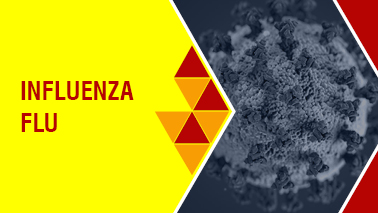
Flu is a contagious respiratory illness brought on by influenza viruses that can sometimes spread to the lungs as well as the nose and throat. It can lead to mild to severe illness, and occasionally even death. Getting vaccinated against the flu every year is the greatest approach to prevent the virus.
The following are typical flu symptoms:
These signs and symptoms appear one to four days (usually two) after being exposed to the virus and continue for two to eight days. Pneumonia, which can be brought on by the virus or a subsequent bacterial infection, can develop from influenza. Meningitis, encephalitis, acute respiratory distress syndrome, and worsening of pre-existing medical conditions like asthma and cardiovascular disease are some additional complications of infection.
The main method of influenza virus transmission in people is through respiratory droplets produced by coughing and sneezing. Flu viruses A, B, C, and D are the four different types of influenza viruses. Influenza A virus (IAV) is mostly carried by aquatic birds and is also common in many mammals, including humans and pigs. Influenza B virus (IBV), influenza C virus (ICV), primarily infects human and influenza D virus (IDV) found in cattle and pigs. Human IAV, IBV, and ICV circulate and generate seasonal epidemics, while ICV predominantly affects children and causes a moderate infection. IDV has the ability to infect humans but is not known to be harmful.
Tags
Ebola Conferences 2025
European Congress on Virology
COVID-19 Conferences
Antiviral Research Meetings
Vaccine Conferences and Meetings 2025
Virology Meetings 2025
Microbiology Conferences
Asian Virology Conferences
Virology Conferences 2025 USA
Virology Conferences 2025
Virology Conferences 2025 Europe
Pathology Conferences

Zika virus infection is a virus spread by mosquitoes that normally has no symptoms but can occasionally result in fever, rash, joint pain, or an infection of the membrane covering the white of the eye (conjunctivitis, or pinkeye). Microcephaly (a serious birth defect) and eye abnormalities in the baby can be brought on by zika virus infection in a pregnant woman.
The zika virus is spread by mosquitoes, but it can also be transferred from one person to another through sexual contact, blood transfusions, and from a pregnant woman to her unborn child. Microcephaly and other congenital malformations in the infant, such as limb contractures, high muscle tone, eye abnormalities, and hearing loss, are caused by zika virus infection during pregnancy. Congenital zika syndrome is the name given to these clinical features as a whole.
Most zika virus victims exhibit no symptoms, and many are unaware that they are infected. If they do, they normally begin 3–14 days after infection and persist 2–7 days on average. Infections that are severe enough to demand hospitalisation are rare. Zika virus seldom results in death.
Guillain-barre syndrome, neuropathy, and myelitis can also be brought on by the zika virus, especially in adults and older children. A nerve condition known as Guillain-Barre syndrome results in temporary sensory loss or pins-and-needles sensations as well as muscle weakness.
Tags
AIDS Research and Therapy Conferences
Vaccine Conferences and Meetings 2025
Medical Virology Meetings
European Congress on Virology
Virology Conferences 2025 Europe
Virology Conferences
American Virology Meetings
Ebola Conferences 2025
Antiviral Research Meetings
Virology Conferences 2025
Virology Conferences 2025 USA
COVID-19 Conferences
Virology Meetings 2025

The staphylococcus bacteria are what cause staph infections. Many healthy people frequently have these types of germs on their skin or in their noses. These bacteria frequently do no harm or only result in minor skin diseases. However, staph infections can become fatal if the bacteria spread more into your body and get into your bloodstream, joints, bones, lungs, or heart. Life-threatening staph infections are becoming more common in apparently healthy individuals.
There are numerous forms of infections that staph bacteria can cause, including:
There are different symptoms with certain conditions when staph infections affect parts of your body other than your skin. Following are some of these conditions and their symptoms:
Antibiotics and washing the affected region are typically used as treatments. But certain staph infections develop a resistance to standard drugs and stop responding to them. In order to treat staph infections that are resistant to antibiotics, health care providers may have to use drugs that have more adverse effects.
Tags
Asian Virology Conferences
European Congress on Virology
Virology Conferences
Epidemiology Conferences 2025 Europe
Vaccine Conferences and Meetings 2025
Virology Conferences 2025 Europe
Virology Meetings 2025
COVID-19 Conferences
Microbiology Conferences

The bacteria known as mycobacterium tuberculosis, which causes tuberculosis (TB), primarily damages the lungs but can also harm the kidneys, spine, or brain. The disease TB is treatable and preventable. When someone coughs or sneezes, tiny droplets of bacteria enter the air and can spread tuberculosis between people.
You won't always feel ill if you have TB. The sickness comes in two forms:
Antibiotics are used to treat both active and latent TB infections. It's crucial to take your medication as directed in order to ensure that you eliminate all TB bacteria from your body.
Along with active or latent TB, you might also learn about various TB types, including the most common type, pulmonary (lung) TB. But the bacteria can also damage other parts of your body, including your lungs, which can result in extrapulmonary tuberculosis (or TB outside of the lung). The following symptoms of systemic miliary TB, which can affect the entire body:
Tags
AIDS Research and Therapy Conferences
Virology Conferences 2025 USA
Vaccine Conferences and Meetings 2025
Asian Virology Conferences
Pathology Conferences
Influenza Conferences
Medical Virology Meetings
COVID-19 Conferences
Microbiology Conferences
Virology Conferences 2025 Europe
Antiviral Research Meetings
Ebola Conferences 2025
European Congress on Virology
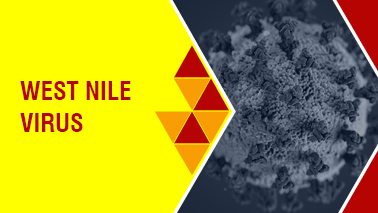
West nile fever is brought on by the single-stranded RNA virus known as the west nile virus (WNV). It belongs to the same genus as the zika virus, dengue virus, and yellow fever virus, flavivirus, and is a member of the family flaviviridae. Mosquitoes, primarily culex species, are the main vectors of the virus. The virus shares genetic ancestry with the family of viruses that cause japanese encephalitis.
Humans, birds, mosquitoes, horses, and a few other creatures can contract the west nile virus. WNV in humans cannot be treated or prevented by vaccines. Fortunately, most WNV carriers don't exhibit any symptoms. Fever and other symptoms are present in one in every five infected people.
Typical symptoms and warning indications include:
A serious sickness involving the central nervous system, such as encephalitis (brain inflammation), or meningitis (inflammation of the membranes that surround the brain and spinal cord), affects about 1 in 150 affected individuals.
Tags
European Congress on Virology
Influenza Conferences
Epidemiology Conferences 2025 Europe
Microbiology Conferences
Vaccine Conferences and Meetings 2025
Asian Virology Conferences
Virology Conferences 2025 USA
Medical Virology Meetings
Virology Conferences 2025
Ebola Conferences 2025
AIDS Research and Therapy Conferences
Virology Meetings 2025
Antiviral Research Meetings
COVID-19 Conferences

Herpes is caused by the herpes simplex virus infection (HSV). Along with other symptoms, it also results in sores or blisters developing in or around the mouth or genitalia.
The most widespread viruses are:
Herpes has no known treatment; however it is treatable and can lessen the risk of recurrent outbreaks and partner transmission. For those with HSV infection, antiviral drugs including acyclovir, famciclovir, and valacyclovir are the most effective treatments (see WHO recommendations). However, they cannot treat the infection; they can only help to lessen the intensity and frequency of the symptoms.
Tags
Influenza Conferences
European Congress on Virology
Pathology Conferences
Virology Conferences 2025
Medical Virology Meetings
COVID-19 Conferences
American Virology Meetings
Epidemiology Conferences 2025 Europe
Virology Conferences 2025 Europe
AIDS Research and Therapy Conferences
Asian Virology Conferences
Antiviral Research Meetings
Virology Meetings 2025
Microbiology Conferences

The ebola virus affects the entire body, causing severe tissue damage and inflammation. It is referred to as a hemorrhagic fever virus because it can disrupt the body's clotting mechanism and cause internal bleeding as blood leaks from tiny blood vessels. The ebola virus causes an acute, deadly illness that, if left untreated, frequently results in death.
EVD mostly affects nonhuman primates (such as monkeys, gorillas, and chimpanzees) and people. It is brought on by an infection with a subfamily of the ebolavirus:
Only four of these (ebola, sudan, tai forest, and bundibugyo viruses) have been linked to human disease. Pigs and nonhuman primates can get sick from the reston virus, but humans haven't been affected by it yet.
Blood, saliva, sweat, tears, mucus, vomit, faeces, breast milk, urine, and semen from ebola-infected individuals can be directly contacted to spread the disease. Touching objects that have been polluted with these fluids also spreads it. After contracting the virus, symptoms typically appear anywhere from two days to three weeks later. Typically, fever, sore throat, headaches, and muscle pain are the initial signs of an infection. These are typically followed by nausea, diarrhoea, rash, and a reduction in the function of the liver and kidneys, at which time some persons start to bleed both internally and externally.
Ebola has no known treatment. For the treatment of ebola, two medications have received approval:
Tags
Virology Conferences 2025 USA
Microbiology Conferences
European Congress on Virology
Ebola Conferences 2025
American Virology Meetings
Influenza Conferences
Virology Conferences 2025
Medical Virology Meetings
Virology Conferences 2025 Europe
COVID-19 Conferences
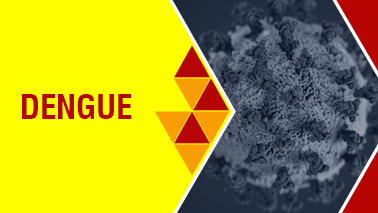
Dengue fever, which is spread by mosquitoes, is common in tropical and subtropical areas of the world. Female mosquitoes, primarily of the species Aedes aegypti and albopictus, are the major carriers of the dengue virus. These mosquitoes are also carriers of the zika, yellow fever, and chikungunya viruses. A high fever and flu-like symptoms are brought on by mild dengue fever. The severe variety of dengue fever, also known as dengue hemorrhagic fever, can result in severe bleeding, a sudden drop in blood pressure (shock), and even death.
Any of the following signs and symptoms may accompany a temperature of 104 F (40 C) caused by dengue fever:
Most people return to normal in a week. Sometimes, symptoms get worse and might even be fatal. It's referred to as severe dengue (dengue hemorrhagic fever or dengue shock syndrome). When your blood vessels are harmed and leaky, severe dengue occurs. The number of platelets in your blood also decreases. Shock, haemorrhaging, organ failure, and even death could result from this.
A life-threatening illness, severe dengue fever can manifest early warning signals. The warning signals, which typically start within the first day or two after your fever has subsided, may include:
There is no particular drug that can be used to treat dengue. The two main defences against dengue are avoiding mosquito bites and receiving a vaccination. If you've already experienced dengue, you should only acquire the dengue vaccine (DengvaxiaTM). Your risk of getting a severe case of dengue may be reduced if you later get a different strain of the virus. If you have never had dengue, it is not advisable to obtain the vaccine.
Tags
COVID-19 Conferences
European Congress on Virology
AIDS Research and Therapy Conferences
Medical Virology Meetings
Influenza Conferences
Virology Conferences 2025
Virology Conferences 2025 Europe
Vaccine Conferences and Meetings 2025
Ebola Conferences 2025
American Virology Meetings
Virology Research Market in USA
The virology research market in the USA is a significant and growing sector of the life sciences industry. Virology research involves the study of viruses, their behavior, and their interactions with host cells and organisms. This research is essential in understanding the underlying mechanisms of viral diseases and developing new treatments and vaccines.
According to a report by MarketsandMarkets, the global virology market is expected to reach $5.74 billion by 2023, growing at a CAGR of 5.7% from 2018 to 2023. The USA is the largest market for virology research, accounting for a significant share of the global market.
Factors driving the growth of the virology research market in the USA include increasing funding for research and development of antiviral drugs and vaccines, the rising incidence of viral diseases such as COVID-19, and the growing demand for personalized medicine.
The major players in the virology research market in the USA include AbbVie Inc., Gilead Sciences, GlaxoSmithKline plc, Merck & Co., Inc., and Johnson & Johnson. These companies are investing heavily in research and development to develop new treatments and vaccines for viral diseases.
Virology Research Market in Europe
The virology research market in Europe is a significant part of the global virology research industry. Virology research involves the study of viruses, their behavior, and their interactions with host cells and organisms. This research is critical in understanding the underlying mechanisms of viral diseases and developing new treatments and vaccines.
According to a report by Grand View Research, the global virology market size was valued at $3.63 billion in 2020 and is expected to grow at a compound annual growth rate (CAGR) of 6.1% from 2021 to 2028. Europe is a significant market for virology research, with countries such as Germany, France, Italy, and the United Kingdom playing a significant role.
The growth of the virology research market in Europe is driven by several factors, including increasing investment in research and development activities, the rising incidence of viral diseases such as COVID-19, and the growing demand for personalized medicine.
Some of the key players in the virology research market in Europe include AbbVie Inc., Bristol-Myers Squibb Company, GlaxoSmithKline plc, Merck & Co., Inc., and F. Hoffmann-La Roche Ltd. These companies are investing heavily in research and development to develop new treatments and vaccines for viral diseases.
Virology Research Market in Asia
The virology research market in Asia is a significant and rapidly growing sector of the global virology research industry. Virology research involves the study of viruses, their behavior, and their interactions with host cells and organisms. This research is essential in understanding the underlying mechanisms of viral diseases and developing new treatments and vaccines.
According to a report by MarketsandMarkets, the global virology market is expected to reach $5.74 billion by 2023, growing at a CAGR of 5.7% from 2018 to 2023. Asia is one of the fastest-growing markets for virology research, with countries such as China, Japan, and India playing a significant role.
The growth of the virology research market in Asia is driven by several factors, including increasing investment in research and development activities, the rising incidence of viral diseases such as COVID-19, and the growing demand for personalized medicine.
Some of the key players in the virology research market in Asia include AbbVie Inc., Gilead Sciences, GlaxoSmithKline plc, Merck & Co., Inc., and Johnson & Johnson. These companies are investing heavily in research and development to develop new treatments and vaccines for viral diseases.
Microbiology Research Market in USA
The microbiology research market in the USA is a significant and growing sector of the life sciences industry. Microbiology research involves the study of microorganisms, including bacteria, viruses, fungi, and protozoa, and their interactions with living organisms and the environment.
According to a report by MarketsandMarkets, the global microbiology market size is expected to reach $5.77 billion by 2023, growing at a CAGR of 6.4% from 2018 to 2023. The USA is the largest market for microbiology research, accounting for a significant share of the global market.
Factors driving the growth of the microbiology research market in the USA include increasing funding for research and development, the rising incidence of infectious diseases, and the growing demand for personalized medicine.
The major players in the microbiology research market in the USA include Danaher Corporation, Becton, Dickinson and Company, bioMérieux SA, Thermo Fisher Scientific Inc., and Abbott Laboratories. These companies are investing heavily in research and development to develop new technologies and products for microbiology research.
Microbiology Research Market in Europe
The microbiology research market in Europe is a significant part of the global microbiology research industry. Microbiology research involves the study of microorganisms, including bacteria, viruses, fungi, and protozoa, and their interactions with living organisms and the environment.
According to a report by Grand View Research, the global microbiology market size was valued at $3.25 billion in 2020 and is expected to grow at a compound annual growth rate (CAGR) of 6.0% from 2021 to 2028. Europe is a significant market for microbiology research, with countries such as Germany, France, Italy, and the United Kingdom playing a significant role.
The growth of the microbiology research market in Europe is driven by several factors, including increasing investment in research and development activities, the rising incidence of infectious diseases, and the growing demand for personalized medicine.
Some of the key players in the microbiology research market in Europe include Danaher Corporation, Becton, Dickinson and Company, bioMérieux SA, Thermo Fisher Scientific Inc., and Abbott Laboratories. These companies are investing heavily in research and development to develop new technologies and products for microbiology research.
Microbiology Research Market in Asia
The microbiology research market in Asia is growing rapidly due to the increasing demand for new treatments, vaccines, and diagnostics to combat infectious diseases. Asia is home to a diverse range of microbiological research institutions, including government-funded research institutions, universities, and private companies, which are contributing to the growth of the market.
Some of the major factors driving the growth of the microbiology research market in Asia include the increasing prevalence of infectious diseases, rising government funding for research and development, growing investments by biotechnology and pharmaceutical companies, and the availability of advanced research facilities and equipment.
China and India are two of the largest markets for microbiology research in Asia, due to their large populations and high burden of infectious diseases. Japan and South Korea are also significant markets, with a strong focus on biotechnology and pharmaceutical research.
The microbiology research market in Asia is highly competitive, with a large number of domestic and international players operating in the region. Some of the leading players in the market include Thermo Fisher Scientific, Merck KGaA, Bio-Rad Laboratories, Inc., and Qiagen N.V.
Overall, the microbiology research market in Asia is expected to continue to grow in the coming years, driven by increasing investments in research and development, technological advancements, and the rising demand for new treatments and diagnostics to address the growing burden of infectious diseases in the region.
Virology Socities:
American Society for Virology / European Society for Clinical Virology / Hellenic Society of Virology / Danish Society for Virology / Pan American Society for Clinical Virology / The International Society for Neuro Virology / International Society for Antiviral Research / Albanian Society of Infectious Diseases / Arab Alliance for the Prudent Use of Antimicrobials / Argentine Society of Infectious Diseases / Asia-Pacific Society for Medical Virology / Asia-Pacific Society of Clinical Microbiology and Infection / Asian Association of UTI and STD (AAUS) / Association de Chimiothérapie Anti-Infectieuse (ACAI) / Association of Medical Microbiology and Infectious Disease Canada / Association of Microbiology in Bosnia and Herzegovina / Association of Pathologists of Tanzania / Australasian Society for Infectious Diseases / Australian Society for Antimicrobials / Australian Society for Microbiology / Austrian Society of Antimicrobial Chemotherapy / Bangladesh Society of Infectious and Tropical Diseases (BSITD) / Brazilian Society of Infectious Diseases / British Society for Antimicrobial Chemotherapy / Bulgarian Society of Chemotherapy / Chilean Society of Infectious Diseases / Chinese Pharmacological Society / Colombian Association of Infectious Diseases (ACIN) / Croatian Society for Urogenital & Sexually Transmitted Infections / Croatian Society of Chemotherapy / Croatian Society of Infectious Diseases of the Croatian Medical Association / Cuban Society of Microbiology and Parasitology / Cyprus Society of Clinical Microbiology and Infectious Diseases / Czech Society for Infectious Disease / Danish Infectious Disease Society / Danish Society for Clinical Microbiology / Deutsche Gesellschaft für Infektiologie / Deutsche Vereinigung zur Bekampfung der Viruskrankheiten (DVV) / Dutch Society for Medical Microbiology (NVMM) / Dutch Working Group International Medical Microbiology (WIMM) / Egyptian Society of Parasitology / Emirates Infectious Diseases Society / Federation of Infectious Diseases Societies of Southern Africa / Georgian Society of Paediatric Chemotherapy / Ghana AMR Platform / Global Chinese Association of Clinical Microbiology and Infectious Diseases / Hellenic Society for Chemotherapy / Hellenic Society for Infectious Diseases / Hellenic Society for Microbiology / Hong Kong Society for Microbiology and Infection / Hong Kong Society of Infectious Diseases / Infection Control African Network / Infectionists Scientific Society of Republic Belarus / Infectious Disease Association of Thailand / Infectious Diseases Society of Taiwan / Infectious Diseases and Clinical Microbiology Specialty Society of Turkey (EKMUD) / Inter-Regional Association for Clinical Microbiology and Antimicrobial Chemotherapy (Russia) / International Society of Non-Antibiotics (ISN) / Iranian Society of Medical Bacteriology / Iranian Society of Microbiology / Israeli Society for Infectious Diseases / Italian Society of Chemotherapy / Japanese Society for Chemotherapy / Korean Association of Urogenital Tract Infection and Inflammation (KAUTII) / Korean Society for Antimicrobial Therapy (Seoul) / Korean Society for Clinical Microbiology / Kosovo Society for Microbiology / Lebanese Society for Infectious Diseases & Clinical Microbiology / Macedonian Microbiological Society / Malaysian Society of Infectious Diseases and Chemotherapy / Medical Microbiology and Infectious Disease Society of Pakistan / Mediterranean Society of Chemotherapy and Infection / New Zealand Microbiological Society / Nordic Society for Clinical Microbiology and Infectious Diseases (NSCMID) / Norwegian Society of Medical Microbiology (NFMM) / Paediatric Infectious Disease Society of Thailand / Panamerican Society of Infectious Diseases (API) / Paul-Ehrlich-Gesellschaft für Infektionstherapie e.V. / Philippine Society for Microbiology and Infectious Diseases / Polish Medical Association, Section of Chemotherapy / Romanian Society for the Study of Chemotherapeutics / Saudi Society for Medical Microbiology & Infectious Diseases / Scottish Microbiology Association / Senegalese Society of Microbiology / Serbian Society for Antimicrobial Chemotherapy / Singapore Society for Microbiology & Biotechnology / Slovak Society of Chemotherapy / Slovenian Society of Antimicrobial Chemotherapy / Société Tunisienne de Pathologie Infectieuse (STPI) / Sociedade Portuguesa de Doenças Infecciosas e Microbiologia Clinica / Society of Infectious Diseases (Singapore) / Society of Infectious Diseases Pharmacists / Society of Infectious Diseases, Chinese Medical Association / Spanish Society of Chemotherapy / Swiss Society for Infectious Diseases
Microbiology Socities:
Alliance for the Prudent Use of Antibiotics - (APUA) / American Microscopical Society / US National Committee for Microbiology / American Society for Microbiology / American Academy of Microbiology / The American Society for Rickettsiology (ASR) / Anaerobe Society of the Americas / IncAOAC International / Associazione Microbiologi Clinici Italiani (AMCLI) / Australian and New Zealand Environmental Mutagen Society (ANZEMS) / Australian Society for Microbiology / South Australian Branch / Tasmanian Branch / Biofilm Club -microbial biofilm researchers / Chinese Society for Microbiology / Federation of European Microbiological Societies (FEMS) / International Mycological Association (IMA) / Infectious Diseases Society of America / International Union of Microbiological Societies (IUMS) / Japanese Society of Microbial Ecology / Koninklijke Nederlandse Akademie van Wetenschappen (KNAW) / National Foundation for Infectious Diseases / Northeast Association for Clinical Microbiology and Infectious Disease / Pharmaceutical Microbiology Forum / Society for Actinomycete Japan / Society for General Microbiology / The Society for Industrial Microbiology / Society for General Microbiology / The Society for Industrial Microbiology / UK National External Quality Assessment Scheme for Microbiology / Taiwan Society of Microbiology / Turkish Society of Antimicrobial Chemotherapy (ANKEM) / Turkish Society of Chemotherapy / Turkish Society of Hospital Infections and Control / Welsh Microbiological Association
Virology Journals:
Cell Host and Microbe / Lancet HIV / The Annual Review of Virology / Eurosurveillance / Trends in Microbiology / Journal of Clinical Virology / Emerging Microbes and Infections / mBio / Journal of Medical Virology / PLoS Pathogens / Current Protocols in Microbiology / Reviews in Medical Virology / Virus Evolution / Antiviral Research / Current HIV/AIDS Reports / Current Opinion in Virology / Journal of Virology / Journal of Virus Eradication / Epidemics / Current Opinion in HIV and AIDS / Viruses / Retrovirology / Journal of General Virology / Cellular Microbiology / Virologica Sinica / Virus Research / Tumour Virus Research / Topics in antiviral medicine / Virology / Virology Journal / Expert Review of Anti-Infective Therapy / Gut Pathogens / Journal of Viral Hepatitis / Virology: Research and Treatment / American Journal of Tropical Medicine and Hygiene / Microbial Cell / Microorganisms / Antiviral Chemistry and Chemotherapy / AIDS Research and Therapy / Journal of Interferon and Cytokine Research / Journal of NeuroVirology / Viral Immunology / Food and Environmental Virology / Vector-Borne and Zoonotic Diseases / AIDS Research and Human Retroviruses / Archives of Virology / Microbiology and Immunology / African Journal of AIDS Research / Acta Virologica / journal / Journal of Virological Methods / Virus Genes / VirusDisease / Journal of Infection in Developing Countries / Virus Adaptation and Treatment / Open AIDS Journal / Current HIV Research / Advances in Virology / Intervirology / HIV/AIDS - Research and Palliative Care / Interdisciplinary Perspectives on Infectious Diseases / Molecular Genetics, Microbiology and Virology / Voprosy Virusologii / Infektsionnye Bolezni / Virologie / Zhurnal Mikrobiologii Epidemiologii i Immunobiologii / Mikrobiolohichnyi Zhurnal / Chinese Journal of Microbiology and Immunology / Journal of Bacteriology and Virology / Journal of International Peacekeeping
Vaccine Companies:
OncoQr / AFFiRiS / EveliQure Biotechnologies / HOOKIPA Pharma / Valneva / Viravaxx / Eyam Vaccines & Immunotherapeutics / Defence Therapeutics / AstriVax / Ziphius Vaccines / Curavac / GSK / Phylex BioSciences / Dynavax Technologies / Gritstone Bio / Abcentra / Nuravax / Khloris Biosciences / Enochian / Biosciences / InvVax / Flow Pharma / EnGen Bio / Meissa Vaccines / VaxCyte / Adamis Pharmaceuticals / Aegis Life / BioNTech / Eli Lilly / Inovio / Pharmaceuticals / Neuvogen / Novartis / Polynoma / Styx Biotechnologies / AstraZeneca / Centivax / Merck / Vaxart / CC-Pharming / SinoCellTech / Sinovac / Biotech / YishengBio / Clover Biopharmaceuticals / Pacific GeneTech / TOT Biopharm / RVAC Medicines / CanSino Biologics / Vivaldi Biosciences / Celldex / Therapeutics / L2 Diagnostics / AXON Neuroscience / Uvax Bio / Synklino / AJ Vaccines / IO Biotech / MinervaX / Evaxion Biotech / Bavarian Nordic / Rokote / Laboratories / Opko Health / NuGenerex Immuno-Oncology / X-Vax Technology / ILIAD Biotechnologies / Vaaxel / Vaxinano / Imaxio / Osivax / Valneva / Abivax / Abivax / LinKinVax / Vaxon Biotech / Valneva / Theravectys / Vaxxel / Blue Lake Biotechnology / CyanVac / Inhibikase Therapeutics / GeoVax / Bavarian Nordic / BioNTech / Vibalogics / BioNTech / BioNTech / Bavarian Nordic / Bial / Ethris / Immatics Biotechnologies / Oryx Translational Medicine / Abbott / CSL Behring / Akorn / Bharat Biotech / Indian Immunologicals / Bharat Serums & Vaccines / Haffkine Biopharmaceuticals / Panacea / Biotec / MSD / Pfizer / Organic Vaccines / BiondVax Pharmaceuticals / Etna Biotech / KM Biologics / KM Biologics / KM Biologics / KM / Biologics / BioComo / HanaVax / Japan BCG Laboratory / Tella / Genexine / SK Chemicals / Aston Sci / CELLID / EuBiologics / LG Chem Life Sciences / Quratis / RNAGene / GC Biopharma / Pfizer / HilleVax / Matrivax Research and Development / Vibalogics / Affinivax / BioNTech / Gritstone Bio / Novartis / Sanofi / Vaxxas / VBI Vaccines / ClearB Therapeutics / Celldex Therapeutics / Berg / Xenetic Biosciences / Agenus / Inhibikase Therapeutics / Versatope Therapeutics / RVAC Medicines / Celldex Therapeutics / OncoPep / Selecta Biosciences / Opko Health / Rational Vaccines / Emergent Biosolutions / Emergent BioSolutions / PathoVax / Longhorn Vaccines / Biofactura / Biologics Resources / Medigen / Altimmune / AstraZeneca / BioNTech / Valneva / VLP Therapeutics / Immunomic Therapeutics / Integrated BioTherapeutics / Sanaria / Wellstat Group / Novartis / BlueWillow Biologics / EVOQ Therapeutics / Emergent BioSolutions / Immunophotonics / Omniose / Sequoia Vaccines / TregTherapeutics / Istari Oncology / NightHawk Biosciences / Pfizer / CimCure / Bilthoven Biologicals / Vicinivax / Intravacc / Immunetune / Vironovative / Cytuvax / ISA Pharmaceuticals / Pantarhei / Bioscience / Avalia Immunotherapies / Akorn / Novartis / Celldex Therapeutics / Merck / Advaxis / Merck / Bionor Pharma / Hubro / Therapeutics / Nykode Therapeutics / PCI Biotech / Ultimovacs / IMV / Calder Biosciences / POP Biotechnologies / TechnoVax / Codagenix / urora Biopharma / MerciaPharma / Alpha-1 Biologics / PnuVax / Microbix Biosystems / Sanofi / UbiVac / Seneca Therapeutics / CSL Behring / Merck / Inovio Pharmaceuticals / Immunethep / Bial / Epitopea / PnuVax / Medicago / pHLIP / Nanolek / SCG Cell Therapy / RVAC Medicines / AELIX Therapeutics / Archivel Farma / Ferrer / VAXDYN / Araclon Biotech / Alzinova / AstraZeneca / 2A Pharma / AstraZeneca / Eurocine Vaccines / Scandinavian Biopharma Holding / Abera Bioscience / Novartis / Mymetics / AMAL Therapeutics / Redbiotec / Virometix / Vaxeal / Vectorite Biomedical / Adimmune / Medigen Vaccine / Biologics / Papivax / Vitruvian Biomedical / Elios Therapeutics / Vaxxinity / Bellicum Pharmaceuticals / Emergex Vaccines / Enesi Pharma / PsiOxus Therapeutics / AilseVax / Epitopea / ImmunoBiology / Midatech / AstraZeneca / Valneva / Baseimmune / Poolbeg Pharma / Prokarium / Sporegen / Treos Bio / Vicebio / AstraZeneca / Seqirus / Oxford Vacmedix / Scancell / SpyBiotech / Vaccitech / Allergy Therapeutics
Virology Universities in Europe:
University of Oxford / Imperial College London / University of Zurich / Erasmus University Rotterdam / University of Cambridge / Karolinska Institute / University of Edinburgh / University of London / University of Amsterdam / University College London / University of Munich / University of Glasgow / Utrecht University / Heidelberg University - Germany / University of Birmingham / Ghent University / University of Helsinki / University of Freiburg / University of Giessen / University of Bern / University of Liverpool / University of Milan / Autonomous University of Barcelona / Johannes Gutenberg University Mainz / University of VeterinaryMedicine, Vienna / University of Wurzburg / University of Barcelona / Sapienza University of Rome / Wageningen University / University of Bologna / University of Copenhagen / Catholic University of Leuven / Charite - Medical University of Berlin / Goethe University of Frankfurt am Main / University of Tubingen / University of Bari / University of Marburg / University of Erlangen Nuremberg / University of Geneva / University of Liege / Hannover Medical School / Lund University / University of Aix-Marseilles / Leiden University / Free University of Berlin / University of Bonn / Umea University / University of Vienna / University of Padua / University of Bristol / University of Nottingham / Uppsala University / University of Lausanne / Queen Mary University of London / University of Turin / University of Hamburg / Institute of Tropical Medicine / University of Gothenburg / University of Cologne / University of Warwick / University of Manchester / University of Ulm / Humboldt University of Berlin / King's College London / Free University Amsterdam / University of Gottingen / University of Leeds / University of Montpellier / Swedish University of Agricultural Sciences / Aarhus University / Medical University of Vienna / Free University of Brussels / Swiss Federal / Institute of Technology Zurich / University of Pisa / Radboud University / Technical University of Munich / Complutense University of Madrid / University of Turku /
University of St Andrews / University of Parma / Technical University of Denmark / University of Rome Tor Vergata / University of Pavia / University of Basel / Pierre and Marie Curie University / University of Oslo / National and Kapodistrian University of Athens / Heinrich Heine University of Dusseldorf / University College Dublin / Normal Superior School of Lyon / Paris Descartes University / Queen's University Belfast / University of Siena / New University of Lisbon / University of Genoa / University of Ljubljana / Royal Veterinary College University of London / Federico II University of Naples / Durham University
Contact us now and we will make your event unique & unforgettable
All numbers indicates percentage %
Europe
North America
Middle East
Asia Pacific
Africa
All numbers indicates percentage %
Virologists
Academic Faculty
Allied Heath Professinals
Hospitals
Pharma & Biotech Industries
Scholars & Students
Research Institutions & Labs
Others
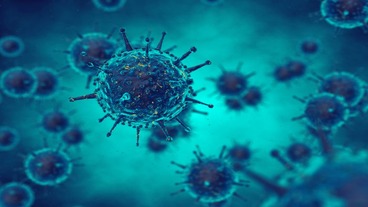
MIPC are therapeutic Methylation Induced Pluripotent Cells which are prepared from peripheral blood samples. For patients, these samples can be obtained from autologous, heterologous or xenographic sources. These cells are very potent in infection prevention and control. They have the potential to eliminate infections (viral or

Aim: Root Canal ?rragation solutions and medicine in endodontic treatment is available for to use alternative materials ( N acetyl cysteine, boric acid, (chitosan) different concentrations mouse fibroblast cell L929 for to Check the Cytotoxicity And Q. aureus Biofilms for to check antibacterial effectiveness of in vitro aspect

Influenza A virus (IAV) remains a significant global health threat, necessitating advanced tools to decode viral behavior and inform therapeutic strategies. Here, we introduce a groundbreaking CRISPR-Cas12-based platform that precisely distinguishes and quantifies viral RNA species—vRNA, cRNA, and mRNA—across the infection c
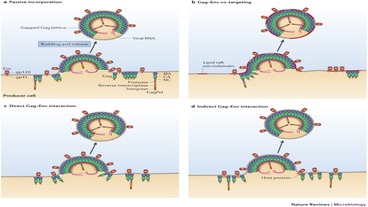
HIV-1 budding, like many other cellular processes, relies on the Endosomal Sorting Complex Required for Transport (ESCRT) machinery, which is essential for virus release via membrane fission. The core membrane remodeling complex, composed of ESCRT-III and VPS4, is highly conserved. However, understanding the native architecture
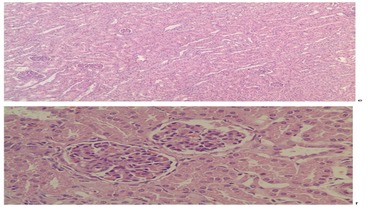
Introduction. The non-pathogenic Torquetenovirus (TTV) is the main representative of the Anelloviridae family. Studies have shown that immunocompromised patients exhibit higher TTV viral loads in the blood compared to healthy controls (? 4 log10 copies/mL), which is associated with increased clinical frailty and poor prognosis (
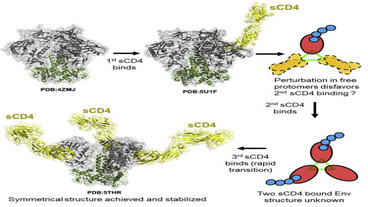
Viral infections, such as those caused by herpes simplex viruses (HSV) and influenza, continue to pose a significant global health challenge, emphasizing the need for effective antiviral therapies. We have developed multivalent entry inhibitors (MEIs) that have an irreversible inhibition mechanism (virucidal) as opposed to the c
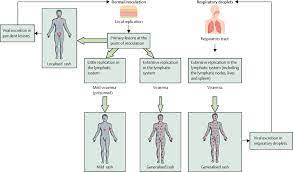
Mpox has been an emerging pathogen in the African continent for some time. In 2021 the disease spread to most of the rest of the world causing thousands of infections with associated morbidity and mortality, primarily in men who have sex with men. This has focused global health efforts on providing vaccines to those most at ri
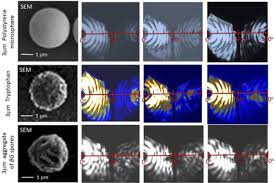
Rapid detection and characterization of bioaerosol particles such as harmful bacteria, virus has been an important research topic for health and environment sciences. Currently real-time bioaerosol detection is mainly based on fluorescence, elastic scattering etc. optical methods, their effectiveness are often limited by the pre
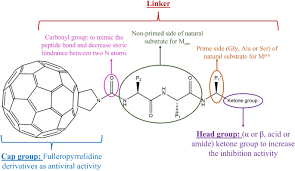
The global pandemic COVID-19 is caused by Severe Acute Respiratory Syndrome Coronavirus 2 (SARS-CoV-2), resulting in significant morbidity and mortality. This study introduces 12 novel peptidomimetic fullerene-based derivatives organized into three groups (Figure 1), which are theoretically explored as inhibitors of SARS-CoV-2 M

